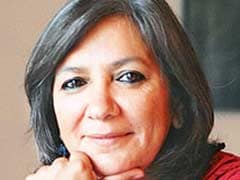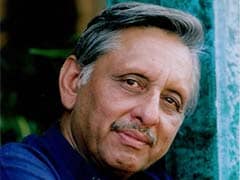- Home/
- Obama visit: No hyphens in India
Obama visit: No hyphens in India
In a nutshell, President Obama is trying to deliver the same message during his three-day visit to India, the first stop on a broader Asian tour. Both countries are eager to build on their improved ties and set up a unique, special relationship, given that together they represent the world's richest and largest democracies. Faced with a rising authoritarian China, and an economically wounded Europe, a weakened United States is casting about for global partners. India would seem a nice fit.
"This is the time to be ambitious about this relationship," said Shivshankar Menon, India's national security adviser, speaking on the panel with Mr. Talbott.
And yet eliminating the hyphen is not easy, especially given India's fraught relations with its neighbors in what is perhaps the most politically complicated region on earth, one in which American lives and treasure are at stake in Pakistan and Afghanistan. And India's evolving relationship with another neighbor, China, is also a prime concern for America. Indeed, the decision to focus Mr. Obama's India trip on India was itself not easily achieved; some senior administration officials lobbied the president to put pressure on Indian leaders for a conciliatory gesture toward Pakistan, in hope that such a carrot might entice the Pakistanis to do more to help America against the Taliban.
These sorts of political equations have long tangled the U.S.-India relationship: The Americans, at different times, have pushed the Indians to cut a deal with Pakistan over the disputed region of Kashmir, but the Indians have bristled at any interference. The Indians still want the Americans to sponsor India for a permanent seat on the United Nations Security Council. Not such an easy thing, the Americans reply, since America alone can't do this and it creates issues between America and China. It has sometimes seemed like a relationship built around one country asking the other to do something it considers against its self-interest.
Moreover, the economic relationship between the two countries often has been a source of friction. High unemployment in America has renewed complaints that outsourcing to India hurts American workers. Indians complain that American protectionism is hurting Indian companies and that American export restrictions on technologies that can have both military and civil uses are outdated and unnecessary in a relationship between putative allies.
Mr. Obama's trip is an attempt to reboot or refocus the relationship away from these disputes and de-emphasize the tangible goodies (for example, contracts) that politicians call "deliverables." Instead, the two sides are discussing how they can partner on education, clean energy, agriculture, technological development and military cooperation. The thematic emphasis of the visit is on shared democratic values -- a pointed dig at China -- and what the two countries say are shared opportunities. American officials say that an expected $4 billion deal for India to buy military transport aircraft -- yes, a goodie -- will provide thousands of American jobs. Indian officials emphasize that trade between the two countries is basically balanced -- unlike with China -- and that the anger over outsourcing is misplaced, especially since some Indian companies are investing and creating jobs in the United States.
Some Indian commentators have groused that all the diplospeak about shared opportunities obscures the fact that the trip lacks a "big idea" to excite or elevate the relationship, even as big, unavoidable problems are seemingly being avoided. In 2000, former President Bill Clinton spent five days in India on a door-opening visit that was credited with righting what had been a stalled relationship. Then former President George W. Bush made the most dramatic gesture by pushing through an agreement to cooperate on civilian nuclear projects; the move effectively legitimized India as a nuclear power and lifted a 30-year moratorium on nuclear trade with India even though India had not signed the Nuclear Nonproliferation Treaty. By comparison, Mr. Obama seems not to be offering much.
"The jury is out," said Shekhar Gupta, editor of The Indian Express, speaking of how India's political establishment views Mr. Obama.
But Ronen Sen, who recently retired from India's diplomatic corps after serving as ambassador to the United States, says the focus on a "big idea" is misplaced. Given the litany of difficult problems between the two countries, Mr. Sen said, Mr. Obama's approach was a reasonable way to build trust and broaden a bilateral relationship that, while greatly improved, had not yet fully matured.
"It has not yet reached a critical mass where it can be self sustaining," Mr. Sen said.
Indeed, even the landmark civil nuclear deal remains a subject of dispute as the two sides still squabble over fine details of how American suppliers could begin doing business in the lucrative Indian nuclear energy market. The Americans say that rules recently approved by India are inconsistent with accepted global practice, which exempts foreign suppliers from liability in cases of accidents, leaving it solely with local operators. A senior American official said "intense discussions" were underway to find a solution. If one is found, Mr. Obama may get a nice "deliverable" -- an open door through which American firms, as originally expected, can sell nuclear equipment to India and provide jobs at home.
There is less talk of the chances of solving bigger problems, like differences between America and India in global negotiations on climate change and trade. And the uncertainty over the most problematic hyphens -- Afghanistan and Pakistan -- looms over the visit. Even as Mr. Obama seeks a way to stabilize Afghanistan and get out, Indian officials dread the day America leaves. They worry about what will be left behind, since India cannot leave the neighborhood.
"Quite obviously, we have strategic stakes there," said Brig. Gurmeet Kanwal, director of the Center for Land Warfare Studies, a military research institute. "We do not wish to have a government in Afghanistan or a government in Kabul that is inimical to Indian interests."
He added: "We see the United States as a stabilizing influence in Asia."
And so a political courtship will continue, problems and all. Governmental ties already lag far behind the people-to-people relationships. America remains the premier destination for Indian students studying abroad, and Indian immigrants in America have achieved disproportionate success in business, medicine and many other fields. It is this backchannel closeness that serves as a cattle prod nudging the governments to become closer, too.
K. Subrahmanyam, a leading Indian defense analyst, believes that India and the United States represent the inevitable and necessary partnership of the 21st century because China's rise represents a threat to a global order based on democratic principles. He said that demographic trends, too, should bind the two countries together.
"If America needs a partner, Europe is aging, Japan is aging and China is going to age," he said. "The only two major nations in the world who will not be aging, at least for the next 30 years, are the United States and India."
................................ Advertisement ................................
Opinion
MoreOpinion: China Has Helped India's Cause With TrumpMihir Sharma, Bloomberg
Thursday June 29, 2017Very little was expected in India from Prime Minister Narendra Modi's visit to the U.S., and for good reason: Modi had gone out of his way to cultivate a personal relationship with Barack Obama, including famously pouring out a cup of tea for him and the cameras when Obama visited India.
Opinion: Modi's US Speech Was Letter Perfect, Ticked Off Every BoxAshok Malik
Friday June 10, 2016Without taking recourse to the old wailing sheet and cribbing to everyone about Islamabad, Modi has devised a mechanism to shape the debate to India's advantage.
Opinion: Modi Ignored Advice To Make Obama Squirm. It Has Paid Off.Jyoti Malhotra
Saturday June 04, 2016The visit to the US in the coming week, in fact, brings Obama's relationship with both Modi and India full circle.
Blogs: कादम्बिनी के कीबोर्ड से : क्या परमाणु करार पर पीछे हटे हम?
Sunday February 08, 2015असल में परमाणु रिएक्टरों में हादसे की सूरत में जो हर्जाना होगा, वह रिएक्टर चलाने वाले को यानि ऑपरेटर को देना होगा। कानून में यह प्रावधान है कि अगर ऑपरेटर चाहे तो वह सामान और ईंधन आपूर्ति करने वाले पर हर्जाने के लिए दावा कर सकता है। लेकिन यहां पर समझने वाली बात यह है कि ऑपरेटर कौन होगा।
Opinion: Mani-Talk: Modi is Turning Us into America's New PakistanMani Shankar Aiyar
Thursday February 12, 2015In "Cold War II", battlefield could be India, writes Mani Shankar Aiyar.
Opinion: Obama Had Pointed Message for Modi 2.0Shashi Tharoor
Wednesday January 28, 2015Clear warning that PM will fail if he reverts to Modi 1.0, writes Shashi Tharoor.
Opinion: What Pakistan Makes of Obama-Modi ChemistryMehr Tarar
Tuesday January 27, 2015Acceptance of Modi's goal-oriented leadership, writes Mehr Tarar.









